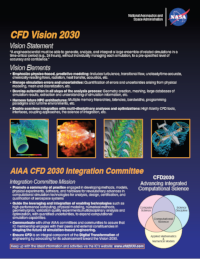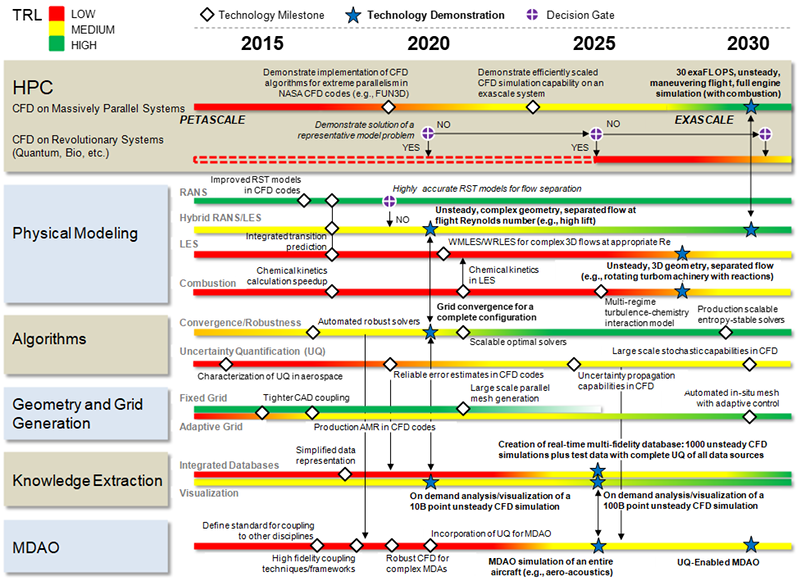CFD 2030 Integration Committee

Download and share this 2-page CFD 2030 Fact Sheet (PDF).
Our Mission
Promote a community of practice engaged in developing methods, models, physical experiments, software, and hardware for revolutionary advances in computational simulation technologies for analysis, design, certification, and qualification of aerospace systems
Guide the leveraging and integration of enabling technologies such as high-performance computing, physical modeling, numerical methods, geometry/grids, validation quality experiments, multidisciplinary analysis and optimization, with quantified uncertainties, to expand computational simulation capabilities.
Communicate with other AIAA committees and communities to assure that IC membership engages with their peers and external constituencies in shaping the future of simulation-based engineering.
Ensure CFD is an integral component of the Digital Transformation of engineering by advocating for its advancement toward the Vision 2030.
Latest News
- The CFD 2030 Fact Sheet has been updated. Download the PDF and share with your CFD network.
- The IC's report updating progress toward the Vision for 2021 is now available.
- More information about AIAA's Integration and Outreach Committees can be found at www.aiaa.org/IOD.
The CFD Vision 2030
Vision Statement
“An engineer/scientist must be able to generate, analyze, and interpret a large ensemble of related simulations in a time-critical period (e.g., 24 hours), without individually managing each simulation, to a pre-specified level of accuracy and confidence.”
Vision Elements
Emphasize physics-based, predictive modeling: Includes turbulence, transitional flow, unsteady/time-accurate, chemically-reacting flows, radiation, heat transfer, acoustics, etc.
Manage simulation errors and uncertainties: Quantification of errors and uncertainties arising from physical modeling, mesh and discretization, etc.
Develop automation in all steps of the analysis process: Geometry creation, meshing, large databases of simulation results, extraction and understanding of simulation information, etc.
Harness future HPC architectures: Multiple memory hierarchies, latencies, bandwidths, programming paradigms and runtime environments, etc.
Enable seamless integration with multi-disciplinary analyses and optimizations: High fidelity CFD tools, interfaces, coupling approaches, the science of integration, etc.
The Technology Development Roadmap
The CFD 2030 Vision Study included a roadmap for development of technology in each of the five areas deemed challenges to timely achievement of the vision.
For annual assessments of progress toward the Vision and updates to the Roadmap, visit our Roadmap Updates page.
